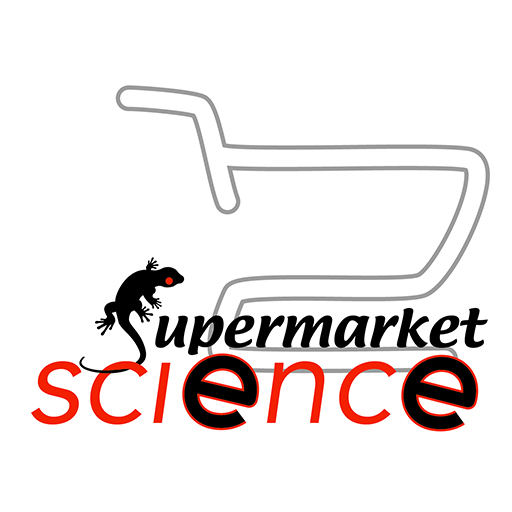About Supermarket Science
My partner and I developed science, math, and writing curriculum for kindergarten to about 8th grade. We own the copyright on all of it. I’m looking to make it all available online for free for parents to use. Because most households with kids have more than one kid — kids in different grades. If parents and their kids ALL have to work from home, it puts tremendous pressure on computing resources. Who’s has the priority to be on a computer? A parent to do work? A high schooler studying for his SATs? A third-grader? How can a limited resource be divided amicably? Well, our materials were designed to be downloaded and printed. Kids could do activities with pen and paper and perhaps submit images or movies of their projects to share with others online. If we can make the tech work, we have the materials!
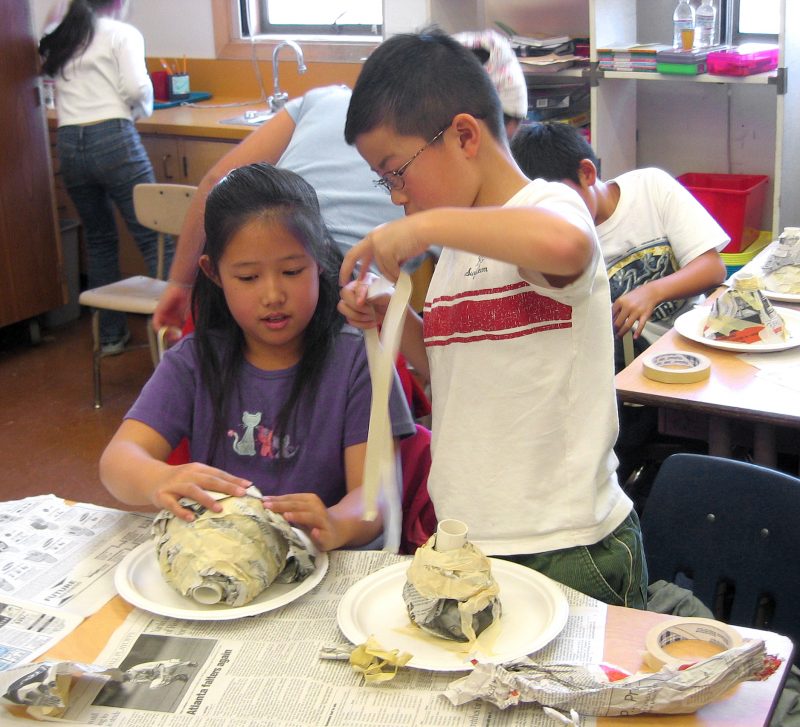
How It All Began
My sons went to a local public elementary school in San Francisco. We could walk to school and most other students got there under their own power. Like other schools around the country, our neighborhood school has few resources to teach science, but for the years my kids were there, I’ve run a school-wide program called Supermarket Science that used local resources and parents’ help to introduce scientific concepts to kids from Kindergarten to fifth grade. Only those classrooms that we interested participated, but that still amounted to about 600 kids for some activities and over 1000 for others.
One year, I worked with two fifth grade classes (about 33 students per class). And these students were responsible for teaching their Science Buddies the concepts we covered in our sciences classes. Science Buddies were students from the same school but in lower grades. We had 10 science buddies classes from Kindergarten to third grades, each was assigned a group of science mentors from fifth grade. After a six week period of instruction and experimentation in fifth-grade classrooms, science buddies were treated to science fair type presentations with a focus on a particular topic. Not only did fifth graders learned complex scientific concepts, but they were responsible for teaching others what they knew. They wrote songs, created posters, set up experiments, and made costumes and plays for their buddies. While not all students performed at the same level, all without exception worked hard on creating science materials and teaching other students what they knew — they learned through teaching. At the end of the year, they received Supermarket Science Medals for their achievements in science education. But more importantly, they all learned a lot…and so did their parents. When parents get involved in education, everyone benefits. Adults who have never been exposed to the scientific method were grappling with new ideas just like their children. And everyone was doing it in the safety of a nurturing and fun educational environment.
The presentation by the Science Buddies not only introduced exciting science concepts to my 3rd grade students, but it inspired them to create their own science experiments.
— Lisa McLaughlin, 3rd grade elementary school teacher
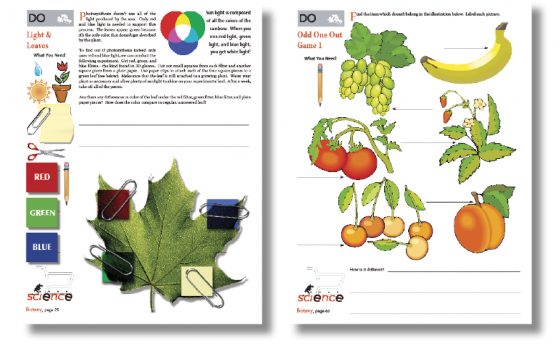
It’s been over a decade now and we are in possession of about 100 activities that people could do with their children at home (or in schools when those are open again after the COVID-19 pandemic). Obviously, Science Buddies is now a company that is selling science fair projects. They have nothing to do with what we were doing. We developed the activities AND a system to integrate science into elementary school. Our Science Buddies were older students teaching an “adopted” lower grade class, very similar to Reading Buddies — older kids reading books to younger ones.
We believe that reading, writing, science, art, and math are just sides of the same tetrahedron — a 4-sided pyramid is composed of four sides and a base. You can teach reading as part of the science curriculum. You can learn math as you do art projects. And writing to clearly express your ideas is necessary for everything, including the internal dialog that we continuously practice during the day. Those who learn how to talk themselves through a problem, do well in life!
There is great treasure there behind our skull and this is true about all of us. This little treasure has great, great powers, and I would say we only have learnt a very, very small part of what it can do.
—Isaac Bashevis Singer
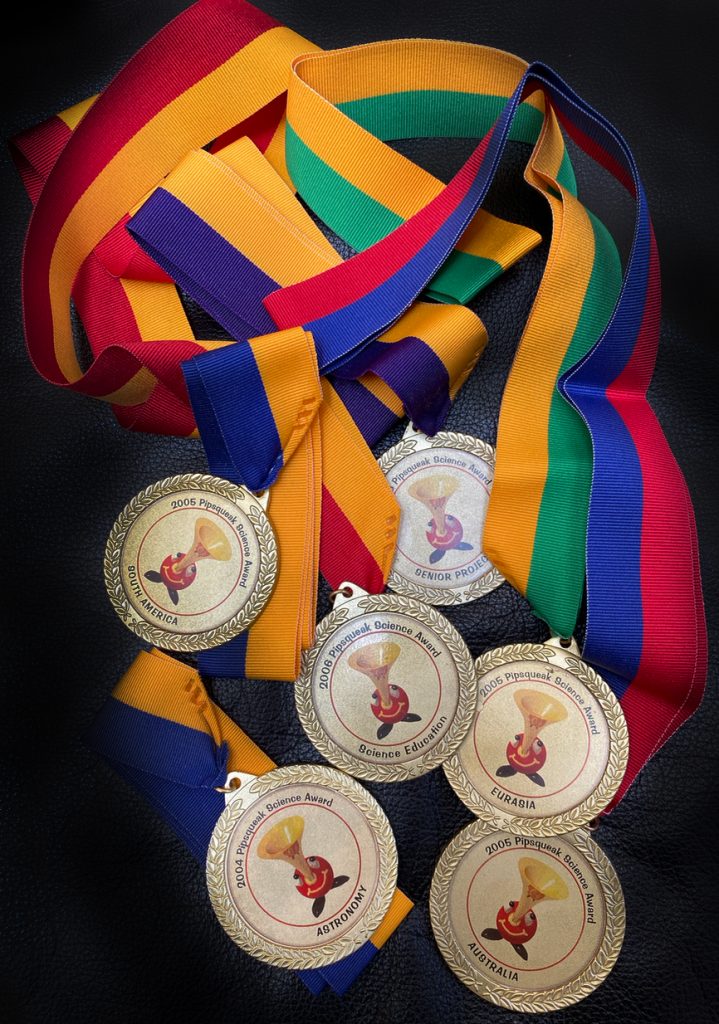
All of our materials use local resources — thus Supermarket Science name — and came with a complete set of instructions for parents and teachers. All of our projects are linked to the National Curriculum Standards. We use are cheap and easily available materials. All can work at many different levels — younger kids can do a little, older kids could turn these projects into reports or stories or science fair projects. Everyone is different. Everyone has different strengths and a different set of talents and skills. Our materials work for all. Download the ones that look like fun (or that are doable based on your current situation) and that correspond to the Common Core Curriculum you are trying to cover and have fun!
ZOMBies: Zones of Maximum Benefit
We didn’t just throw these materials together. And I feel that it is always good to give a bit of educational background, when possible. So if this is of no interest, please skip to the next section which explains how to use our materials or start downloading materials.
A well-designed science curriculum should serve as a bridge between what students already understand and know how to do and what they don’t know yet. That bridge exists within the Zone of Proximal Development (“ZPD”). ZPD is a concept introduced by a Russian psychologist, L. S. Vygotsky, in his theories on human knowledge acquisition shortly after the Russian Revolution. ZPD is the zone between what students know how to do on their own and what they can’t accomplish even with the help of a great teacher. It’s what a student can achieve with guided assistance. We now understand that all effective teaching efforts should be aimed at this zone. Efforts aimed beyond this zone, according to Vygotsky, will be ineffectual.
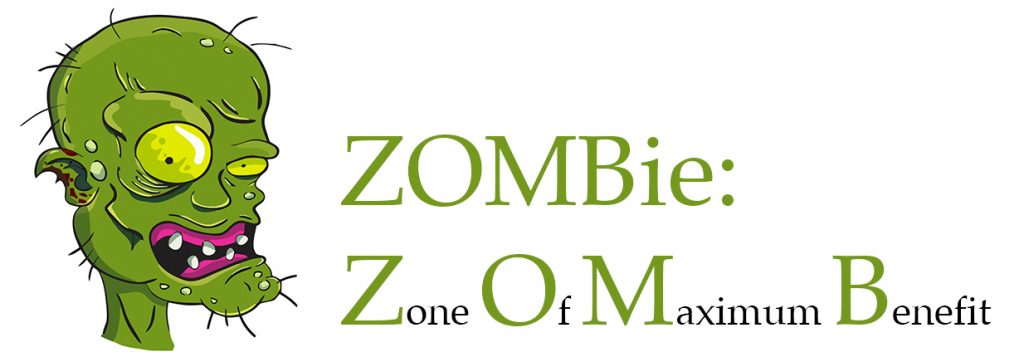
It is critical to know and understand the cognitive abilities of the students for which the instruction is designed. This allows the teacher or curriculum designer to determine her pupil’s ZPD. Once the teacher knows (or has a good guess) what a student is capable of doing in a particular domain with help, she can then develop supporting learning structures for a particular task. These support structures are called scaffolds and they are a key concept to effective instructional design. Scaffolds are cognitive support structures that aide students in accomplishing their goals in difficult situations.
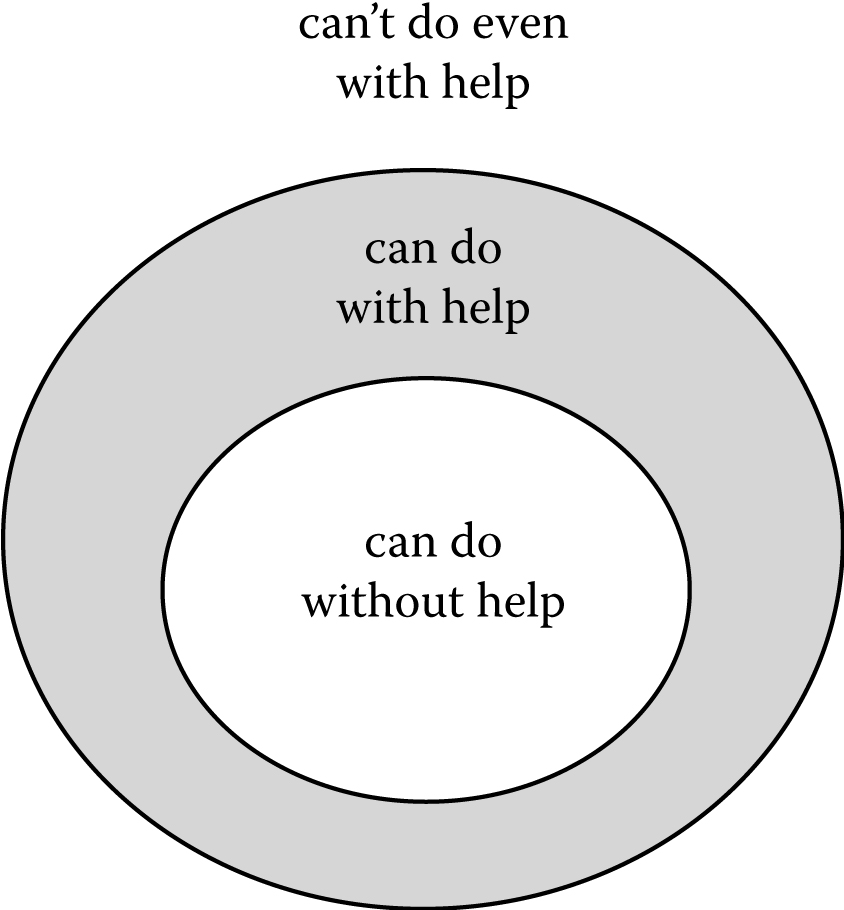
Scaffolds are important, for they give a novice a chance to actually produce a product (e.g.: write a science paper or create a science fair project) or achieve a goal (e.g.: learn how to solve force problems or balance a chemical equation) that would otherwise not be possible. The sense of accomplishment felt by students during the early stages of learning in an unfamiliar domain can help them in their effort to master it.
It would be great to always be able to understand just what a student needs and to individualize the science curriculum to make those needs easier to meet. But in practice, it’s just not feasible. There are always budgetary issues, there never is enough time, and it’s hard to accommodate everyone all of the time. So instructional design is all about compromise: what is the best solution within our school’s means and doable within our classroom time frame? How can we try to accommodate the most number of students the maximum number of times?
The Zone of Maximum Benefit is my riff on the Zone of Proximal Development. While the instructional design solution must lie within the ZPD, its execution lies within the Zone of Maximum Benefit — do the best with what you got. In the context of teaching these ideas to fourth graders, I called it a learning “ZOMBie.” The kids talked about where their individual ZOMBies were all day. From that day forward, I referred to this concept as a ZOMBie.
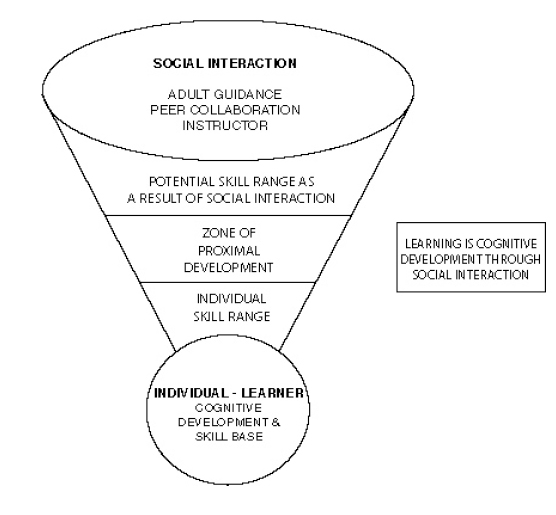
But how does this work in actual practice? In a real classroom? In a busy public elementary or middle school? Supermarket Science Project was our answer to finding a ZOMBie in a public science curriculum. This is also the answer, we believe, for parents who are now finding themselves in the position of their children’s teachers for indefinite periods of time. Those parents and families that familiarize themselves with teaching tools and approaches will have better outcomes.
One last point of theory. Consider the problems of developing a good and effective curriculum. It would be great to have individualized learning materials that tightly fit the cognitive strengths and weaknesses of each student in a group (be that family with kids of different ages and abilities or classrooms full of kids coming from very diverse backgrounds). But that’s just not possible, even with computer-based learning — there are simply too many variables. However, we can design and develop educational materials in a wide variety of formats: graphical organizers and text-based outlines; visual illustrations and mathematical formulas; audiobooks, paperbacks, and movies; etc. The greater the variety of materials, the more likely some of them would fall within the preferred cognitive style of a particular child. This encapsulation of content can form the basis of scaffolded educational support.
Class over.
Goals of Supermarket Science Project
The goal of the Supermarket Science Project was to create a sustainable structure within elementary schools to teach science in an engaging way. To be sustainable it must be inexpensive, flexible, and respectful of teacher needs and capabilities.
Now our goals are to support families in their efforts to teach their own kids at home.
We’ve always believed that any educational materials must encourage and support parental involvement. That they must be pragmatic. That they must be adaptable to the needs of individual students and their families. Supermarket Science materials are useful even if only adopted in part. And all materials must relate to the Core Curriculum Standards for each grade level. In short, Supermarket Science materials must work within the ZOMBie framework.
Background
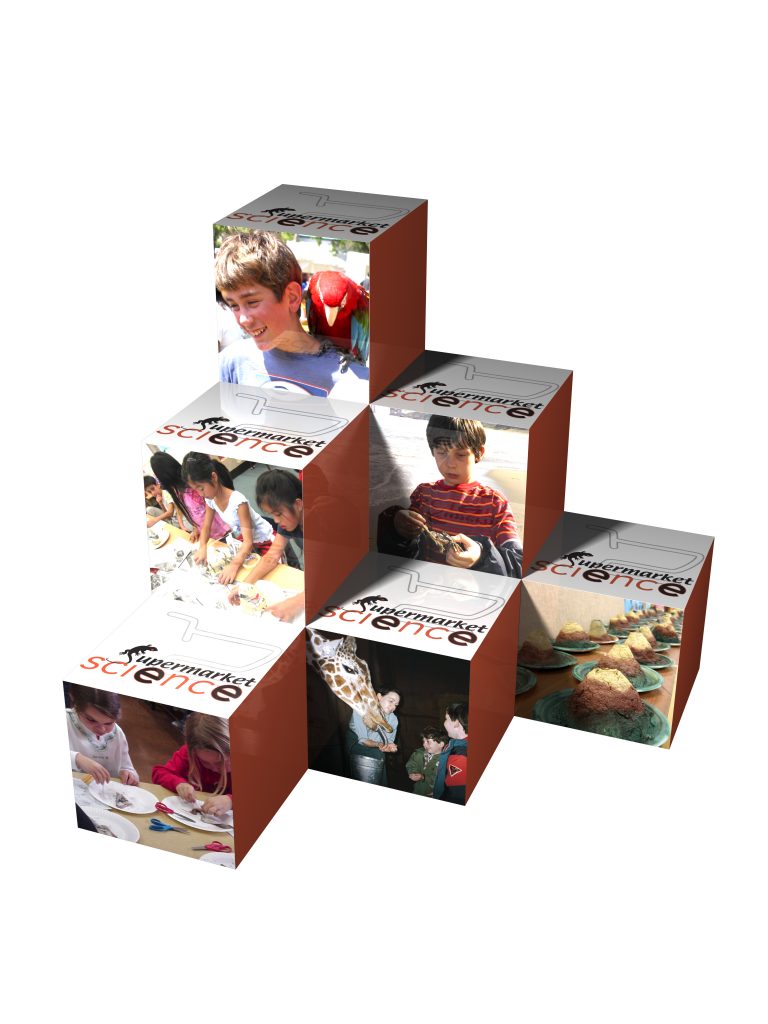
Most elementary science curriculum enhancements suffer from several structural faults. Companies tend to sell kits — materials and books which the teacher and now parents are expected to insert into an existing curriculum. These kits are generally designed to be both horizontal and narrow: horizontal, in that they are geared for a particular grade level; narrow in that they focus on a specific topic.
Except for some written limited instructions, teachers and parents are on their own in utilizing these kits. Hands-on science is logistically hard. Anyone who has served birthday cake to 10 kids at a party can imagine what it must be like for a teacher to try to keep order while filling the beakers of 35 excited third graders with a foaming mixture of baking soda and vinegar. For hands-on activities, teachers need classroom help. At home, parents of different age kids find themselves in similarly difficult situations. How can kids of different ages be taught from one computer? How to divide time and resources equally and effectively between kids. We believe that our Supermarket Science approach solves this problem by organizing materials that could be taught at different levels and which older kids can then partner with their younger siblings as their Science Buddies.
Most science kits are also expensive, frequently resulting in only partial adoption of the available curriculum. And because the kits don’t usually integrate either with the rest of the curriculum or with the kids’ work from previous years, science becomes an isolated activity. By limiting science to particular niche activities, it’s harder to build upon concepts introduced in prior years as is usual in other subjects. Supermarket Science, of course, believes in an integrated approach.
Supermarket Science Project
At its simplest, Supermarket Science Project is a set of materials, frequently tied to local resources, together with a structured approach to teaching science as an integrated and sustainable element of elementary and middle school curricula. It supports the simultaneous teaching of other subjects, especially math, language arts, and social studies.
This was the best way of introducing chemistry into my 5th grade science curriculum. The kids had a blast and learned a lot.
— Lloyd Schine, 5th grade elementary school teacher
Supermarket Science is built upon a pragmatic philosophy of analyzing existing resources and determining how to best access them.
Local resources are identified and tied to specific curriculum materials. So a trip to a zoo, for example, isn’t merely an enjoyable diversion, but it’s also a learning experience enhanced with grade-specific pre- and post-activities which tie into the rest of the curriculum. True, zoos field trips might be a problem during the pandemic when we are all ordered to shelter in place, but backyards and local parks are just as good. The supermarket in Supermarket Science’s name is meant to evoke the tremendous learning potential of seemingly mundane local resources. Supermarket Science seeks to enhance limited classroom and home resources with external, but affordable, educational opportunities.
Supermarket Science is designed to be both vertical and wide. It’s vertical in that it isn’t structured by subject area: a year in biology, a year in physics, a year in geology, and so on. Instead, the subjects are interconnected from kindergarten through eighth grade so that students receive an evolving, increasingly sophisticated view of these concepts as they progress through the grade levels. Supermarket Science is wide in that it allows for multiple access points to scientific concepts: there are art projects, hands-on experiments, writing, discussions, math problems, and so on, all designed to work together. Kids don’t do a unit on graphing merely for its own sake. Instead, they collect data and make records of authentic scientific work. This gives the math real-world relevancy that engages and stimulates. A multi-faceted approach also helps support a variety of learning styles so that more kids are successful.
